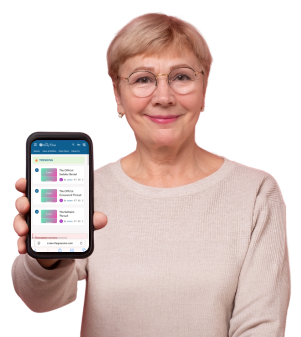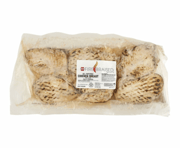2 Exercises That Saved My Knees
You can reduce or eliminate knee pain with just these two exercises.
By
Larry B
- Replies 0
For years I struggled off and on with knee pain. I never had any serious knee injuries, but there were times when it was very difficult to walk without pain.
It may have been due to my weight and the fact that I sit at a desk every day that contributed to the problem.
Doctors never found any issues and would just suggest pain relievers.
Since I enjoy walking and playing golf, this was frustrating. So I started trying to figure out a solution.
Stretching has become part of my daily routine. With age, we lose flexibility in general. So it is important to stretch regularly.
Disclaimer: I am not a doctor or physical therapist. This is a description of things I am doing to solve my knee pain issues. If you have serious knee problems please consult your doctor or therapist before trying it yourself.
In this article I want to talk about what I have done to solve my knee pain issues. They are:
I decided to try this for a simple reason. My knees have always been very sensitive, to the point where even light pressure when trying to kneel was too painful.
I always wondered how Japanese people are able to sit in a kneeling position for long periods. So I started researching it on YouTube and discovered that it is called seiza (proper sitting).
It seemed impossible, since kneeling was so painful for me. But I decided to try it. At first I could barely kneel at all, maybe a few seconds. But slowly, over time I have been able to maintain it for a few minutes at a time with little discomfort.
As part of my regular exercise routine I will sit in seiza between my other kneeling floor exercises, which I do at least twice a week. After several months, I am still not all the way to where I want to be with it, but it is getting easier.
If you are interested in adding this to your routine I would highly recommend checking out YouTube. They have tons of videos, with examples on how to do it properly.
Here is a good YouTube video explaining seiza and how to do it properly:
Seiza: Why You Should Learn Japanese Formal Sitting
The Asian Squat is another exercise I decided to try for many of the same reasons. Bending and squatting were difficult and painful also. And again, it was not due to any injury or chronic condition. I simply did not stretch and work on flexibility enough to offset the effects of sitting all day.
Again, YouTube has been a great source of information. I found several videos where the instructors explained how to do the exercise properly. And just like with seiza, I had to start very slowly and build up my strength and flexibility.
When I started it was difficult to bend my knees past 90 degrees without pain. And it took several weeks before I could get down into a full squat.
I tried to squat for at least 10 minutes a day in the beginning. And I don’t mean consecutively. I would do it for 1 to 2 minutes at a time during breaks from sitting at my desk. Over time I was able to maintain the position longer.
I don’t keep to a strict time goal any longer, but I make sure to squat periodically during the day, just to stretch. So far I have remained pain free and flexibility continues to increase.
Here is a link to on of the videos I watched when I was starting out:
3 Asian Squat Gains Without Asian Squat Pains
The biggest takeaway from this discussion is that I was able to eliminate my knee issues with just these two exercises. As a result, I am able to play golf, and do trail walking pain free. They have become a regular part of my gym routine.
I hope this has been helpful.
It may have been due to my weight and the fact that I sit at a desk every day that contributed to the problem.
Doctors never found any issues and would just suggest pain relievers.
Since I enjoy walking and playing golf, this was frustrating. So I started trying to figure out a solution.
Stretching has become part of my daily routine. With age, we lose flexibility in general. So it is important to stretch regularly.
Disclaimer: I am not a doctor or physical therapist. This is a description of things I am doing to solve my knee pain issues. If you have serious knee problems please consult your doctor or therapist before trying it yourself.
In this article I want to talk about what I have done to solve my knee pain issues. They are:
- Seiza
- Asian Squat
Seiza
- Seiza (正座 or 正坐; せいざ SAY-(ee)-zah; lit. 'proper sitting') is the formal, traditional way of sitting in Japan. It involves a specific positioning and posture in a kneeled position so as to convey respect, particularly toward elders. It developed among samurai during the Edo period and was later widely adopted by the public.
- From Wikipedia - Seiza
I decided to try this for a simple reason. My knees have always been very sensitive, to the point where even light pressure when trying to kneel was too painful.
I always wondered how Japanese people are able to sit in a kneeling position for long periods. So I started researching it on YouTube and discovered that it is called seiza (proper sitting).
It seemed impossible, since kneeling was so painful for me. But I decided to try it. At first I could barely kneel at all, maybe a few seconds. But slowly, over time I have been able to maintain it for a few minutes at a time with little discomfort.
As part of my regular exercise routine I will sit in seiza between my other kneeling floor exercises, which I do at least twice a week. After several months, I am still not all the way to where I want to be with it, but it is getting easier.
If you are interested in adding this to your routine I would highly recommend checking out YouTube. They have tons of videos, with examples on how to do it properly.
Here is a good YouTube video explaining seiza and how to do it properly:
Seiza: Why You Should Learn Japanese Formal Sitting
Asian Squat
- The Asian squat refers to the deep squatting position often observed within (but not exclusive to) Asian cultures, notably when performing tasks that require the individual to be lower to the ground. It’s a position rooted deep within historical culture, long before chairs arrived on the scene or when chairs simply weren’t available.
The Asian Squat is another exercise I decided to try for many of the same reasons. Bending and squatting were difficult and painful also. And again, it was not due to any injury or chronic condition. I simply did not stretch and work on flexibility enough to offset the effects of sitting all day.
Again, YouTube has been a great source of information. I found several videos where the instructors explained how to do the exercise properly. And just like with seiza, I had to start very slowly and build up my strength and flexibility.
When I started it was difficult to bend my knees past 90 degrees without pain. And it took several weeks before I could get down into a full squat.
I tried to squat for at least 10 minutes a day in the beginning. And I don’t mean consecutively. I would do it for 1 to 2 minutes at a time during breaks from sitting at my desk. Over time I was able to maintain the position longer.
I don’t keep to a strict time goal any longer, but I make sure to squat periodically during the day, just to stretch. So far I have remained pain free and flexibility continues to increase.
Here is a link to on of the videos I watched when I was starting out:
3 Asian Squat Gains Without Asian Squat Pains
Conclusion
The biggest takeaway from this discussion is that I was able to eliminate my knee issues with just these two exercises. As a result, I am able to play golf, and do trail walking pain free. They have become a regular part of my gym routine.
I hope this has been helpful.






